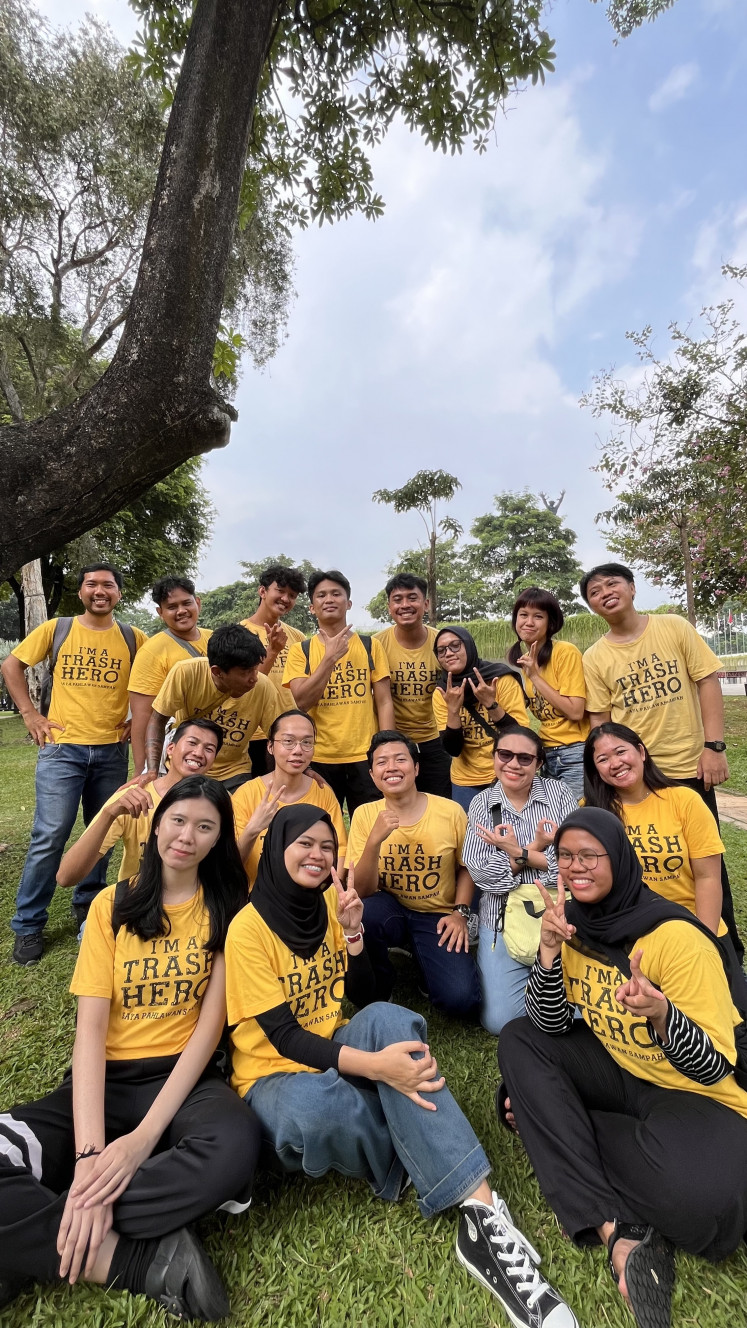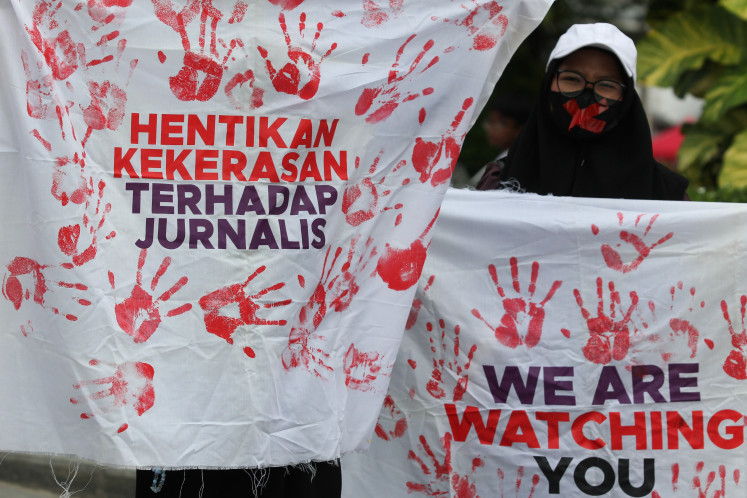Popular Reads
Top Results
Can't find what you're looking for?
View all search resultsPopular Reads
Top Results
Can't find what you're looking for?
View all search resultsBRT remains the only solution for Jakarta: Peñalosa
Enrique Peñalosa
Change text size
Gift Premium Articles
to Anyone
Enrique Peñalosa. JP/Primastuti Handayani
With a population of over 10 million people, Jakarta is suffering chronic traffic congestion. The city administration, under then-governor Sutiyoso, initiated the Transjakarta bus rapid transit (BRT) system back in 2004. Nearly a decade after it began operations, the public transportation mode is still far from adequate to meet public demand.
'Yes, they [the Jakarta administration] copied the name of TransMilenio but they managed it poorly,' commented former Bogota mayor Enrique Peñalosa, who is chairman of the board of directors of the Institute for Transportation and Development of New York. He initiated the BRT system in the Colombian capital starting in December 2000. As of 2012, Colombia had 11 TransMilenio lines totalling 87 kilometers that run throughout the city and transport 47,000 passengers per hour.
Sutiyoso created the Transjakarta BRT to ease traffic congestion. He had warned Jakartans that the capital would grind to total gridlock in 2014. However, the buses have not been fully utilized by the citizens. Last year the average number of passengers declined by 25 percent, to 300,000 passengers from 400,000 per day.
'Passenger numbers have declined because of the long waits. Motorcycles and cars take up lanes, therefore Transjakarta buses can't effectively use them to escape traffic congestion,' Darmaningtyas, a transportation expert from the Indonesian Transportation Society (MTI) said.
According to its official website, Transjakarta buses operate along a total route length of 184.31 kilometers, claiming to be the longest BRT system in the world. It currently operates 669 buses on 12 corridors.
Despite the stumbling blocks, Peñalosa believes that BRT is the only possible solution to cope with Jakarta's traffic congestion.
'BRT is not just cheaper but it can be better than subways in many ways. First of all, it's much better to have public transportation on the surface. Why do we put passengers like rats underground so that people who use cars can use the road and enjoy the sun?
'There are more advantages to the BRT. If you have to move 10,000 passengers in one hour, you will need four trains every 15 minutes. Or you need 120 buses every 20 seconds. That means the waiting time for buses is much shorter,' he explained.
Darmaningtyas had said earlier that the main problem in the operation of Transjakarta buses were external.
'The problems are, among others, unsterile Transjakarta bus lanes, lack of availability of gas-based fuel and a limited number of buses,' he said.
To deal with unsterile lanes, the city administration and the police have begun imposing Rp 500,000 (US$41) and Rp 1 million fines for motorcycles and cars trespassing Transjakarta bus lanes, as stipulated by the 2009 Traffic Law.
Peñalosa also said that with BRT, the distance between each shelter should be about 500 meters, making the distance shorter than on subways which require the distance between each station to be at least 1 kilometer apart.
He even suggested that Transjakarta could provide express buses that stop every 10 or 20 shelters.
Transjakarta Management Body (BLU) spokeswoman Sri Ulina said that starting in 2014, the management would provide 228 new articulated buses and 260 single buses.
'The procurement process has finished and we're just waiting for the buses to be delivered by the end of this year or very early next year,' she said.
In addition to the procurement of new buses, Transjakarta buses will also operate 24 hours a day starting next year. There will be 88 buses ready to transport passengers from 11 p.m. to 5 a.m. on all 12 corridors.
'We will also recondition old buses so that they won't compromise the comfort and safety of passengers. The new buses will replace 30 percent of buses that will go out of system due to expired contracts with their operators,' Sri said.
Peñalosa emphasized that the main problems in major cities in developing countries was equality and democracy.
'Rich people in Jakarta, for example, don't want to give space to buses. They don't like public transportation; they don't like anything except their own cars and a few cars of their friends. Not allowing motorcycles on toll roads also means that it is not democratic.'
'However, they love subways. They travel to Paris, London or New York and take the subway there. But if Jakarta had a subway, they would never use it. It's a matter of social class,' he said. 'Traffic congestion is not just an urban problem but it is a democracy problem. It shows that you have the first-class citizens with their cars and the fourth-class citizens who walk.'
- JP/Primastuti Handayani











